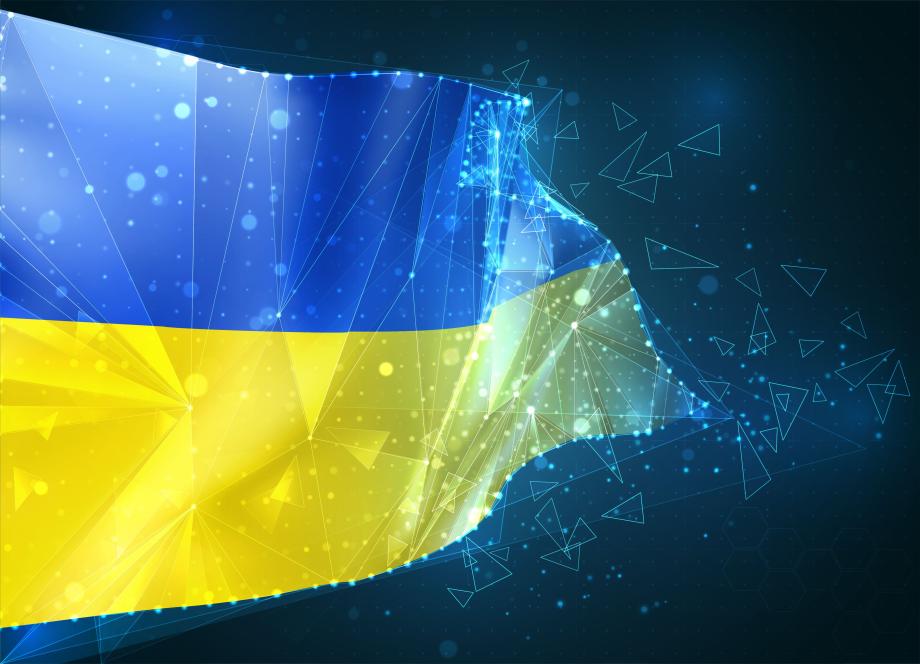The ‘State in a Smartphone’ - or how Zelensky’s digital dream is coming true

Amid nine years of war and over 365 days of the ongoing full-scale Russian invasion of Ukraine, the Ukrainian government has managed to implement significant digital reforms that have transformed the country’s economy, governance, and public services. Moreover, all these efforts have made Ukraine one of the global leaders in digitalisation process speed: it was the first country in the world to officially recognise a digital ID as a legal document, one of the first countries to implement a digital COVID-19 certificate in Europe, ranked sixth in Europe for open data, and took fourth place worldwide for the number of qualified IT specialists.
How is it possible that Ukrainian digital reforms are being implemented steadily despite the challenges posed by Russia’s aggression? The answer lies in Ukraine’s resilience and the insistence of its government to do its job, whether from the bomb shelter or the Verkhovna Rada office, as well as, of course, Ukrainians’ love of technological innovation.[1]
The cradle of the ‘State in a Smartphone’
Ukraine started to pave the way to digitalisation at the end of the Revolution of Dignity in 2014. The first fundamental steps, however, were made by Petro Poroshenko in 2016 while introducing the ‘ProZorro’ system aimed at fighting corruption, improving transparency, and reducing bureaucratic obstacles. These efforts were eagerly continued by President Volodymyr Zelensky when he established the Ministry of Digital Transformation in 2019, intending to transform Ukraine into ’a digital state in a smartphone’ before 2024 in order to improve transparency, fight corruption more effectively, and manage complex administrative hurdles ‘with one click’. This became possible thanks to the Diia app, meaning’ action’ in Ukrainian. What started as an application for uploading COVID-19 certificates currently provides citizens with digital access and securely stores their legal documents, such as identity cards and passports, to name a few, has become a one-stop-shop for public services. Additionally, Diia has a project to eliminate digital illiteracy. Additionally, Diia has a project for elimination of digital literacy called Diia.Digital as well as n initiative for the free economic space for IT companies Diia.City and a project Diia.Business aimed at developing small and medium businesses owner temporarily relocating their companies abroad. Currently, the application is used by over 18.3 million people, roughly half of Ukraine’s population, and it is also being tested in Estonia and Poland.
War VS Digitalization
Since the Crimean annexation in 2014, demand for stronger digital security has grown due to Russian disinformation, propaganda campaigns, and cyberattacks targeting critical civilian and energy infrastructure, and destroying or taking over 4,000 telecommunication stations and over 60,000 kilometres of fibre-optic internet lines. Indeed, on the governmental level, establishing the National Cybersecurity Coordination Center and adopting the Law on Cybersecurity were essential cornerstones. However, after the full-scale Russian invasion of Ukraine, there was an increased demand for war-related services, which needed to be digital due to internal displacement and migration, territory occupation, and constant missile attacks. Therefore, in the first days of the war, the Ukrainian government launched the chatbot called eEnemy , designed for Ukrainian citizens to report the Russian military and its equipment’s movements and inform the Ukrainian government about thecollaborators’ activities. The chatbot activity gained over 370 000 visits, most revealing hostile groups. Moreover, the Diia application offered the option to donate to the Ukrainian army, a financial assistance program for businesses affected by the war, and recompensation for damaged properties. A migrant card, assistance, consultations for displaced people and an eDocument for those crossing the border without documents quickly became available in the application. In this way, a mobile phone could confirm people’s identity, even when the physical copy of the document was lost.
All this, of course, demands improvements in digital infrastructure. Therefore, to access these digital services amidst war and frequent blackouts, the Ukrainian government was granted around 20,000 Starlink terminals enabling the proper functioning of critical infrastructure facilities such as hospitals, schools, and energy infrastructures even after missile strikes. Satellite internet technology makes it possible to lead businesses online, developing a country’s economy while improving general connectivity, including the rural areas. Despite recent arguments between Ukrainian officials and Elon Musk regarding the use and cost of the equipment, it still offers tremendous support, especially in de-occupied areas. In response to the blackouts, Ukrainian authorities have also deployed 5G Internet and established ‘Unbreakable Points’, which have generator-provided electricity, first-aid kits, rest areas, and water. This level of resistance and digital stability not only helps to overcome bureaucratic hurdles but also attracts the biggest tech companies and investors to the country, which is crucial for post-war reconstruction and the country’s economic growth.
Challenges of Ukrainian Digitalisation
Despite all the praise Ukraine has received due to its thorough and determined digitalisation reforms, the country still has a long way to go. Worldwide, the COVID-19 certainly pandemic created a pathway to digitalisation, but it has not convinced all Ukrainians to switch from paper to digital. Government officials and educational and medical professionals are currently facing many war-related challenges. However, one of the significant challenges is their resistance to undergoing changes within the work environment and going digital. No matter how elaborate special educational programs are, they require people’s willingness, without whom the digitalisation of documentation, the elimination of the queues, the reduction of corruption, and the establishment of better relations between citizens and the government are not possible. Hence, necessary digital skills education must be paired with social and cultural eeforms to enable the implementation of those changes.
According to the Ministry of Digital Transformation of Ukraine, just one service’s digitalisation has shown how to mitigate a corruption system of USD 3 billion per year[2]. Following that, anti-corruption efforts are essential for transparency and accountability in the democratic establishment of Ukraine, and recent revelations of corrupted Ukrainian officials only highlight its importance. The measure is simple - limit in-person appointments to a minimum and proceed with the payment of necessary services online. This change is vital to building a trustworthy government, developing a stable digital economy, and joining the European Single Digital Market, which is currently one of Ukraine’s main objectives in its goal of European Integration. Another important cornerstone to achieving that goal is the digitalisation of the Ukrainian energy and critical infrastructure sectors, which would bring European membership closer and tackle the issues of blackouts in the country, among others.
Last but not least, the digital government is more vulnerable to cyberattacks which may lead to the leak of sensitive information, including the potential hacking of Diia and the revealing of the personal data of millions of people. Moreover, the attacks might be targeted towards governmental websites with the goal of spreading misinformation. Nevertheless, it is important to remember that most digitised documentation already exists in a paper version that is currently more prone to be liquidated due to the war and its unpredictability. Strengthening the digital space and developing new ways to fight back against cyberattacks is necessary to tackle this issue.
Way forward?
Ukrainian e-governance maintains faith in public administration, fights corruption, encourages transparency, enables people to receive all necessary documents and public services within one click, and brings Ukraine one step further to meeting EU accession conditions. Digital reforms and security keep the Ukrainian government and workforce afloat, help cut administration process costs, and continue implementing President Zelensky’s 2019 idea of having ‘a State in the Smartphone.’
[1] Cf the Ukrainian concept of ‘Total Defence’ in Nico Lange’s ‘How to Beat Russia’ https://www.globsec.org/what-we-do/publications/how-beat-russia-what-armed-forces-nato-should-learn-ukraines-homeland
[2] Gulsanna Mamediieva, Ukrainian director general details digital transformation in war-time Ukraine https://mccourt.georgetown.edu/news/digital-transformation-war-ukraine/
